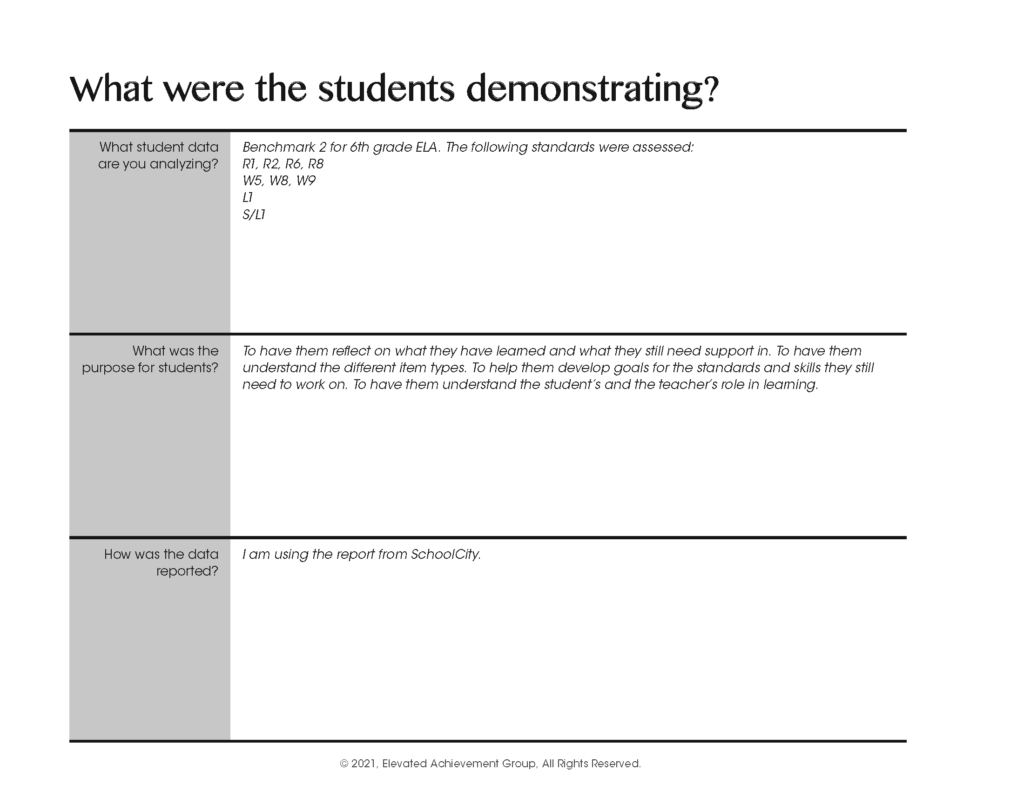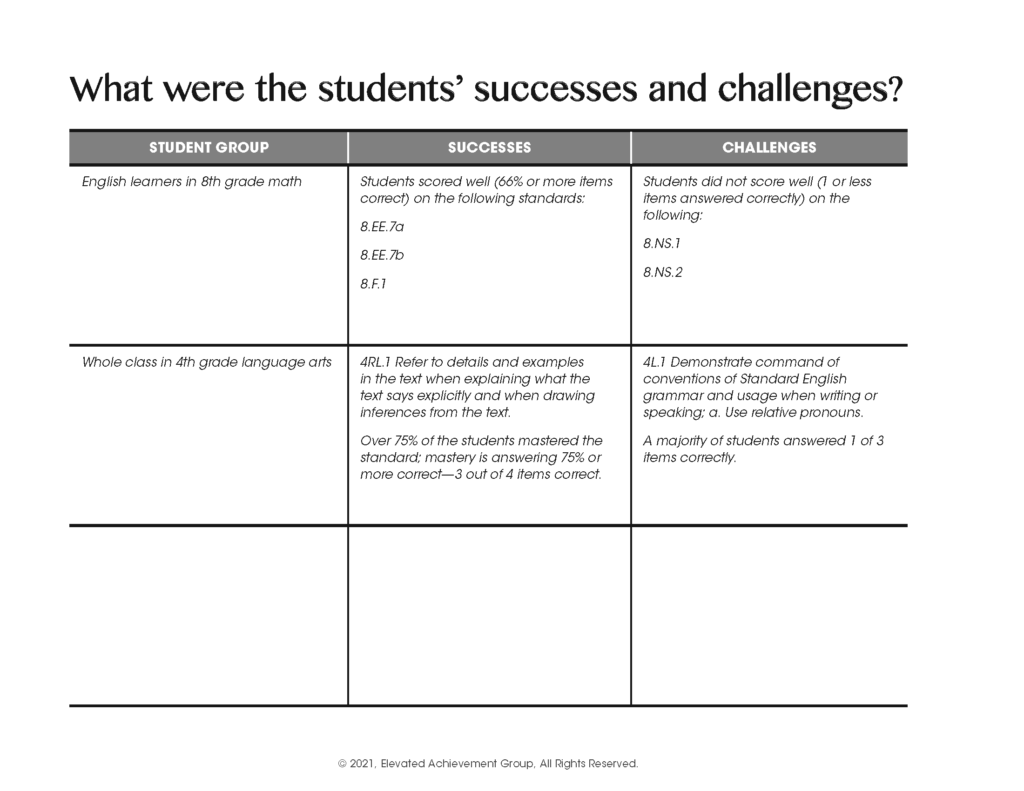Share this article.
When looking at the needs of our students throughout year, one challenge is to determine where the students got lost and what needs recovering. The second challenge is to monitor that learning. How will you know if they are recovering what they have lost? How will you know if you have given them what they need to recover what they have lost?
The most effective data protocol is one that has a built-in process to analyze why students did or did not learn what they needed to.
“Data are not best analyzed alone, while you are sitting in front of a computer screen staring at Excel spreadsheets or colorful graphs. Data analyses are most effective when they are performed with other teachers who share the same standards and assessments, and who can discuss concretely and specifically, based on student results, what is working and what is not working to increase student learning in their context.” (Thomas, 2011)
A reflective data analysis protocol will help you when it comes to reteaching to the specific needs of your students. That’s why we’ve provided this series of articles that explain, step by step, what a reflective data analysis is, how to implement it, and why it’s valuable for your students.
We began the series with an article that introduced a reflective data analysis protocol. And, then continued the series with a focus on each of the three steps:
IDENTIFY: What Happened
-
- What were the students demonstrating?
- What were the students’ successes and challenges?
REFLECT: Why It Happened
-
- How did the format impact student demonstration of learning?
- How did previous decisions in lesson design and delivery impact student demonstration of learning?
IDENTIFY: What Happens Next
-
- Regarding successes, how can previous decisions in lesson design and delivery be replicated to ensure continued student learning?
- Regarding challenges, how can previous decisions in lesson design and delivery be revised to ensure student learning?
In other articles, we provided an in-depth look at the second step—REFLECT: Why It Happened and an in-depth look at the third step—IDENTIFY: What Happens Next.
This article takes an in-depth look at the first step…
IDENTIFY: What Happened
Before reflecting on what worked and what didn’t, we need to understand what our students are telling us in the data. What was the purpose of the assessment—for you and for your students? What were the successes shown by the data? What were the challenges? We must identify this information before we can begin to reflect on possible causes.
ASK: What were the students demonstrating?
Think about the data you are looking at. First, you will need to clarify the following information:
-
- What student data are you analyzing?
- What was the purpose for students?
- How was the data reported?
The following graphic organizer shows how one 6th grade team began their protocol.
Click here to download a blank copy for you to use for your students.
ASK: What were the students’ successes and challenges?
After teachers have reminded themselves of the purpose of the assessment, they took a closer look at the actual numbers. You will need to look for evidence of successes:
-
- What constitutes success?
- Is it a percentage of correct answers for a specific standard or skill?
- Is it a higher score on a rubric?
The same will be true for challenges:
-
- What constitutes a challenge?
- Is it a percentage of incorrect answers for a specific standard or skill?
- Is it a lower score on a rubric?
Identifying successes and challenges will be impossible until this criteria has been determined.
Once you have determined success criteria, look at the successes and challenges of student groupings. This will allow you to drill down to specific students and their successes and challenges. Below is an example of how one 8th-grade math team looked a scores for their English learners and how one 4th-grade team looked at whole class scores for English-Language Arts.
Click here to download a blank copy for you to use for your students.
So, What Now?
Once teachers have completed the first step of the protocol—IDENTIFY: What Happened—they are ready to begin to analyze why students demonstrated their success and challenges as they did. This is the second step of the protocol—REFLECT: Why It Happened—and this is the topic of the next article in this series.
Continue the Learning
Check out these articles and resources to continue your learning about this topic…
The Learning Brief
In this article you learned…
- The most effective data protocol is one that has a built-in process to analyze why students did or did not learn what they needed to because it will help you when it comes to reteaching to the specific needs of your students.
- A reflective data analysis protocol includes 3 steps: Identify what happened, reflect on why it happened, identify what happens next.
- Before reflecting on what worked and what didn’t, you need to understand what students are telling you in the data by identifying what the purpose of the assessment was and by identifying what were the successes and challenges shown by the data.
Can you imagine building an environment full of motivated, engaged, and eager students who own their learning?
We can.



